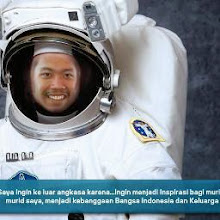Design of a Sodium-cooled Epithermal Long-term Exploration Nuclear Engine
Author:
P. Yarsky, A.C. Kadak, and M.J. Drisco
P. Yarsky, A.C. Kadak, and M.J. Drisco
Edited and Add By:
Arip Nurahman
Department of Physics
Faculty of Sciences and Mathematics, Indonesia University of Education
and
Follower Open Course Ware at Massachusetts Institute of Technology
Cambridge, USA
Department of Physics
http://web.mit.edu/physics/
http://ocw.mit.edu/OcwWeb/Physics/index.htm
&
Aeronautics and Astronautics Engineering
http://web.mit.edu/aeroastro/www/
http://ocw.mit.edu/OcwWeb/Aeronautics-and-Astronautics/index.htm


Arip Nurahman
Department of Physics
Faculty of Sciences and Mathematics, Indonesia University of Education
and
Follower Open Course Ware at Massachusetts Institute of Technology
Cambridge, USA
Department of Physics
http://web.mit.edu/physics/
http://ocw.mit.edu/OcwWeb/Physics/index.htm
&
Aeronautics and Astronautics Engineering
http://web.mit.edu/aeroastro/www/
http://ocw.mit.edu/OcwWeb/Aeronautics-and-Astronautics/index.htm


Abstract
To facilitate the mission to Mars initiative, the current work has focused on conceptual designs for transformational and enabling space nuclear reactor technologies. A matrix of design alternatives for both the reactor core and the power conversion unit were considered. Based on a preliminary screening of technologies using simplified analyses, a conceptual design was established for more detailed design work.
The boiling sodium Rankine cycle was selected for the power conversion unit, and the reactor core is an ultra high power density core with highly enriched uranium fuel. The sodium Rankine cycle has many advantages, lending to a highly efficient radiator and compact reactor core. The sodium-cooled, epithermal long-term exploration nuclear engine (SELENE) is designed to be scalable to meet many differing mission requirements.
The SELENE core is a comprised of Nb-1Zr clad, lead bonded, UC plates in a honeycomb pattern. The fuel plates are arranged into a rectangular grid, roughly 25cm on each end. The fuel is in two zones, one is 97 a/o enriched in 235U and the other is 70 a/o enriched in 235U. The core is a fast spectrum reactor, BeO reflected, and ex-core controlled. Three designs are proposed, the first is for a 10 MWth /1.0 MWe Low Temperature (1300 K) system (SELENE-10-LT) and the second for a 10 MWth /1.2 MWe High Temperature (1500 K) system (SELENE-10-HT) and the third for a 27 MWth 12.6 MWe system (SELENE-30).
All of these designs utilize essentially the same system architecture. Three designs are proposed so that low power variants can be used to verify the technology and develop experience. The reactor systems may then by uprated to a higher power level. The system lifetime is 9 effective full power months, corresponding roughly to a single trip from Earth to Mars and back
























